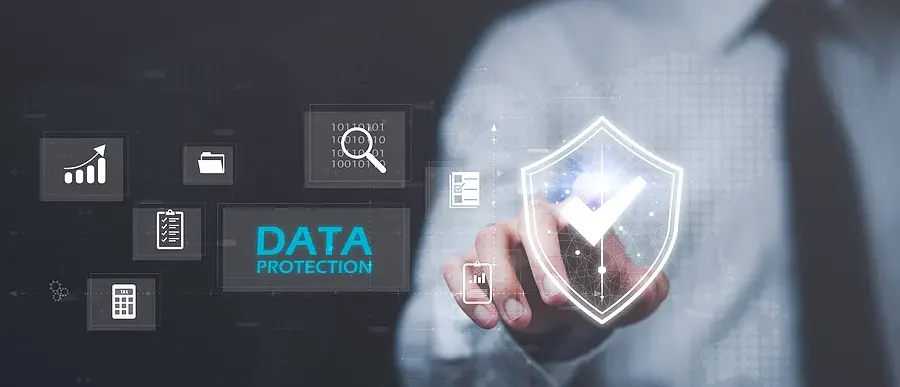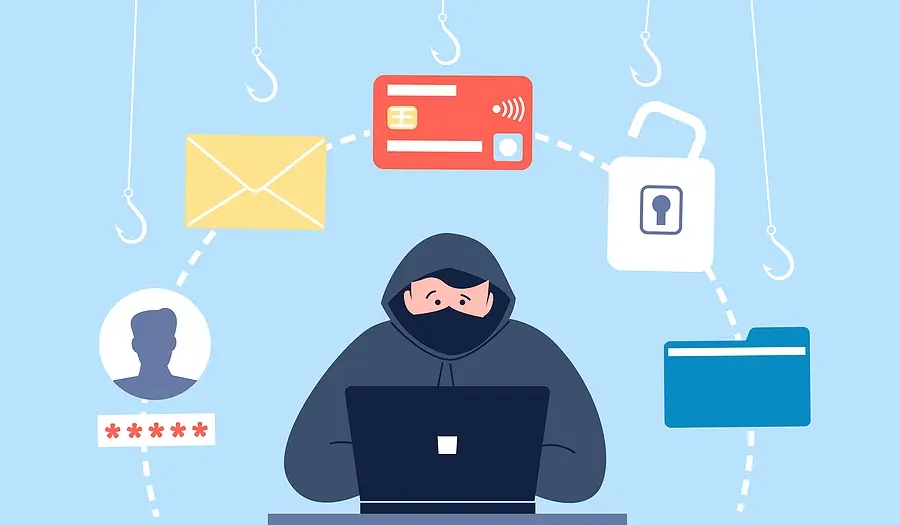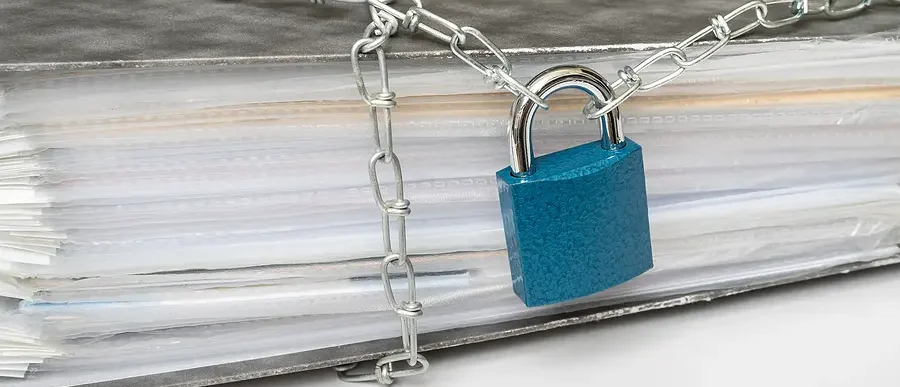
Data theft is a growing concern for businesses and individuals. It is happening more and more frequently and the cost of a breach continues to climb. According to IBM’s Cost of Data Breach Report, the average cost of a data breach is $4.35 million. No one is completely safe from a breach, but there are many steps you can take to increase data security. Implementing a few simple and routine strategies can prevent data theft from happening to you.
What is Data Theft?
Data theft occurs when digital information is stolen from computers, servers, or electronic devices. The stolen data often includes financial information, passwords, medical records, and identification numbers. Stolen data is then sold or used to commit identity theft.
If enough information is stolen, criminals can access private accounts and set up credit cards in the victim’s name. If a hacker has gained access to your data, they can change or delete information and prevent you from accessing it.
How Does Data Theft Happen?

Thieves use a number of techniques to steal your data. Here are some common strategies criminals use to access your data:
Social Engineering
Social engineering uses different methods to trick people into giving away private information. Phishing is the most common type of social engineering using fake emails or text messages to gather login credentials or financial information. Other methods include baiting, honey traps, or diversion theft.
Compromised Downloads
Cybercriminals can gain unauthorized access to your devices if you download data or applications from a compromised site that is infected with malware.
Insider Threats
Insider threats come from disgruntled employees or contractors that steal, copy, or alter data. Anyone who has access to your systems could be a threat.
Human Error
Data breaches can happen accidentally due to human error. Common errors include emails sent to the wrong person, attaching the wrong document, or leaving a database online without protections in place.
System Vulnerabilities
Poorly designed networks, weak software applications, and out-of-date antivirus software can all create vulnerabilities in your system. Weak passwords and server problems can also leave you open to cyberattacks.
Public Information
Thanks to social media and other public platforms, you can find a lot of information through a simple internet search. Criminals can use this information to gain access to private accounts.
Physical Theft
Physical theft can also lead to data theft when paperwork or devices are stolen. This category includes card-skimming. This is when thieves insert a device into a card reader or ATM to steal payment card information.
What Are the Consequences of Data Theft?
The consequences of data theft are vast. Businesses can face lawsuits, ransomware demands, huge recovery costs, penalties and fines, and a loss of customers. Individuals may have to deal with identity theft, emotional distress, and great financial losses. Taking every precaution to prevent data theft will save you many headaches in the long run.
How to Prevent Data Theft

Security measures to protect your data can be put into effect immediately. Here are some steps you can take to prevent data theft:
Protect Your Passwords
You should always use strong passwords containing upper and lower-case letters, numbers, and symbols. Passwords should be memorable, but not easy to guess. Do not use the same password for multiple accounts, change them regularly, and do not write them down. If you cannot remember your passwords, consider using a trusted password manager to keep track.
Use Multi-Factor Authentication
Multi-factor authentication requires two or more forms of identification to access accounts. It adds an additional layer of security beyond entering a username and password.
Limit Sharing
Limit disclosing personal information including your Social Security number, date of birth, work history, and contact information. This includes social media sharing.
Monitor and Close Accounts
You should regularly check financial and sensitive accounts for unauthorized changes or anomalies. All unused accounts should be closed, so they do not have to be monitored.
Monitor Employee Activity
Network traffic and employee activity can be monitored with user access restrictions and activity logs. Automated incident response can also help protect sensitive information.
Restrict Access
Restrict access based on a need-to-know basis. Limiting exposure to your most private data reduces insider threats and protects against fraud and theft.
Secure Your Network
Securing your network lowers the risk of viruses and data theft. Encryption, firewalls, privacy controls, and anti-virus/anti-spyware software are protections that should be in place. Using a proxy service is also a good idea if your employees are traveling, working remotely, or using public Wi-Fi networks.
Clean Desk Policy
A clean desk policy requires employees to keep sensitive documents out of view when away from their desks. It also requires devices to be password-locked when not in active use. This prevents accidental exposure and theft of valuable information.
Shred All Policy
You should shred all paper documents as soon as you no longer need them. Any paperwork containing personal or business details puts you at risk. A shred-all policy ensures that you are destroying all data and nothing is accidentally exposed.
Be Prepared
Data theft can happen even when all the proper precautions are in place. It is a good idea to have a plan in case of a data theft incident. When you are prepared, you can respond quickly and minimize damage.
Prevent Data Theft with Shred Nations
Shred Nations offers document shredding and hard drive destruction to prevent data theft for individuals and businesses. Give us a call at (800) 747-3365 or fill out the form to connect with shredding providers in your area. We will send you free quotes from multiple companies in just minutes.












